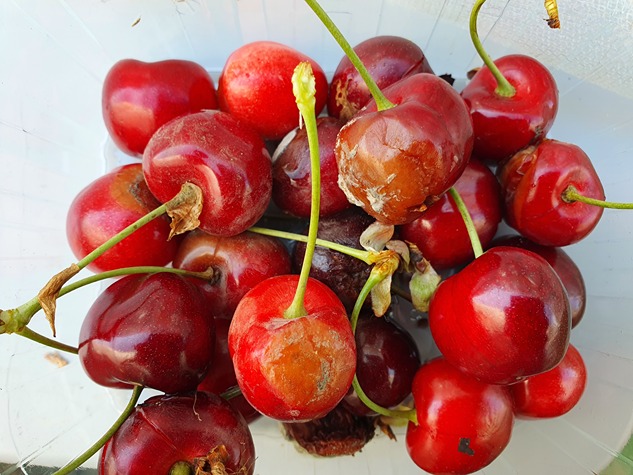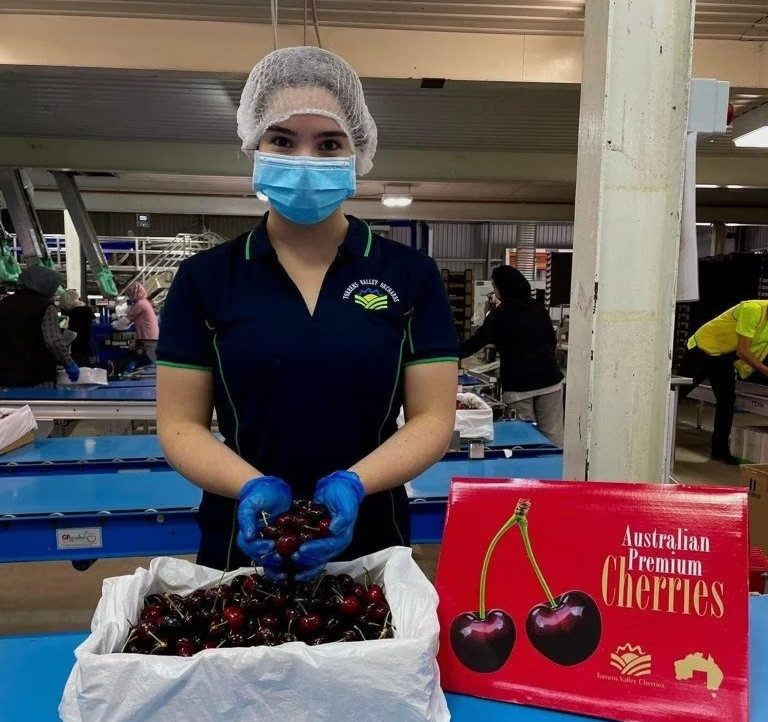Botrytis and brown rot are common diseases in Australian cherry trees. Botrytis reduces the number of viable flowers and damages fruiting shoots, reducing the yield of the harvest.
Brown rot makes the fruit unsellable, and late-season infections can lead to fruit breakage during storage, handling, and post-harvest marketing. Botrytis can be identified by the presence of withered flowers and dead ones, as well as some dieback of associated shoots. It can also appear as yellowed leaves and wilted leaves on branches or twigs.
Brown rot infection appears as a soft and brown decay of the developing fruit, manifesting as grey-brown spores on the surface of the infection when mature. Infected fruits sometimes wither and remain hanging on the tree. These are known as "mummified" fruits (or mummies).
They are an important source of carry-over spores for the next season. It is important to monitor them during winter and remove them from the tree to reduce the number of overwintering spores.
Life Cycle
The first flowers of cherry trees are the initial tissue susceptible to infection at the beginning of the growing season. The conidia (spores produced asexually by various fungi) inoculated from mummified fruits, infected peduncles (the stalk that bears a flower or fruit), and cankers can be spread by splashes or windy rains early in the season.
Monitoring
Botrytis infection largely depends on the amount of inoculum (spores) present on overwintered fruits from the previous season and the duration of humidity that allows the pathogen's spores to germinate. Warmer conditions increase the infection rate. For example, at 10°C, 18 hours of humidity are needed for the disease spores to germinate, but if the temperature is 24°C, only 5 hours are needed.
Infection can occur on flowers and fruits after 3-5 hours of humidity at 20°C; with 24 hours of humidity, severe infection can occur regardless of temperature. Brown rot represents the greatest risk of crop loss in seasons with very humid conditions during flowering or during the final stages of cell expansion, after straw.
Optimal conditions for infection are humid and wet climates, with temperatures between 20 and 25°C. Growing regions that experience these conditions are at high risk of infection.

Due to the high potential crop loss, especially in warm and humid seasons, continue to regularly monitor Botrytis and brown rot throughout the growing season. Infected flowers can be hidden early in the growth of new leaves, making them difficult to see before the infection progresses.
Growers should check flowers, shoots, and developing fruits for signs of rot at least weekly, especially if weather conditions are favorable. The use of disease models calibrated to your orchard can also be helpful to know when to look for the disease and to avoid unnecessary sprays.
Cultural and Physical Management
To prevent the spread of the disease between trees, remove infected shoots through pruning and destroy mummified fruits as soon as they are noticed. This operation early in the season will reduce the chance of the infection spreading to healthy fruits during the season.
Winter pruning is a good time to remove all mummified fruits and infected shoots before the start of the new season, but active infections will not be present at this time. Pruning trees to ensure maximum air flow will help the tree dry out after rain.
Organic
Although some research has been conducted on the effects of antagonistic yeasts as a potential biocontrol for Monilinia species in stone fruits, not many are commercially available. Authorization for the use of the biofungicide Serenade Opti (PER88559, expiration 31.8.24) is available in all states and territories, except Victoria.
The plant-based biofungicide Problad Plus is registered in all states for the suppression of brown rot and botrytis in stone fruits.
An effective spray program for botrytis and brown rot involves a combined approach of protective cover sprays and curative fungicides, as needed, from bud burst to flowering and through to harvest, depending on weather conditions and disease pressure.
Read the full article: Australian Tree Crop
Image: SL Fruit Service
Cherry Times - All rights reserved











